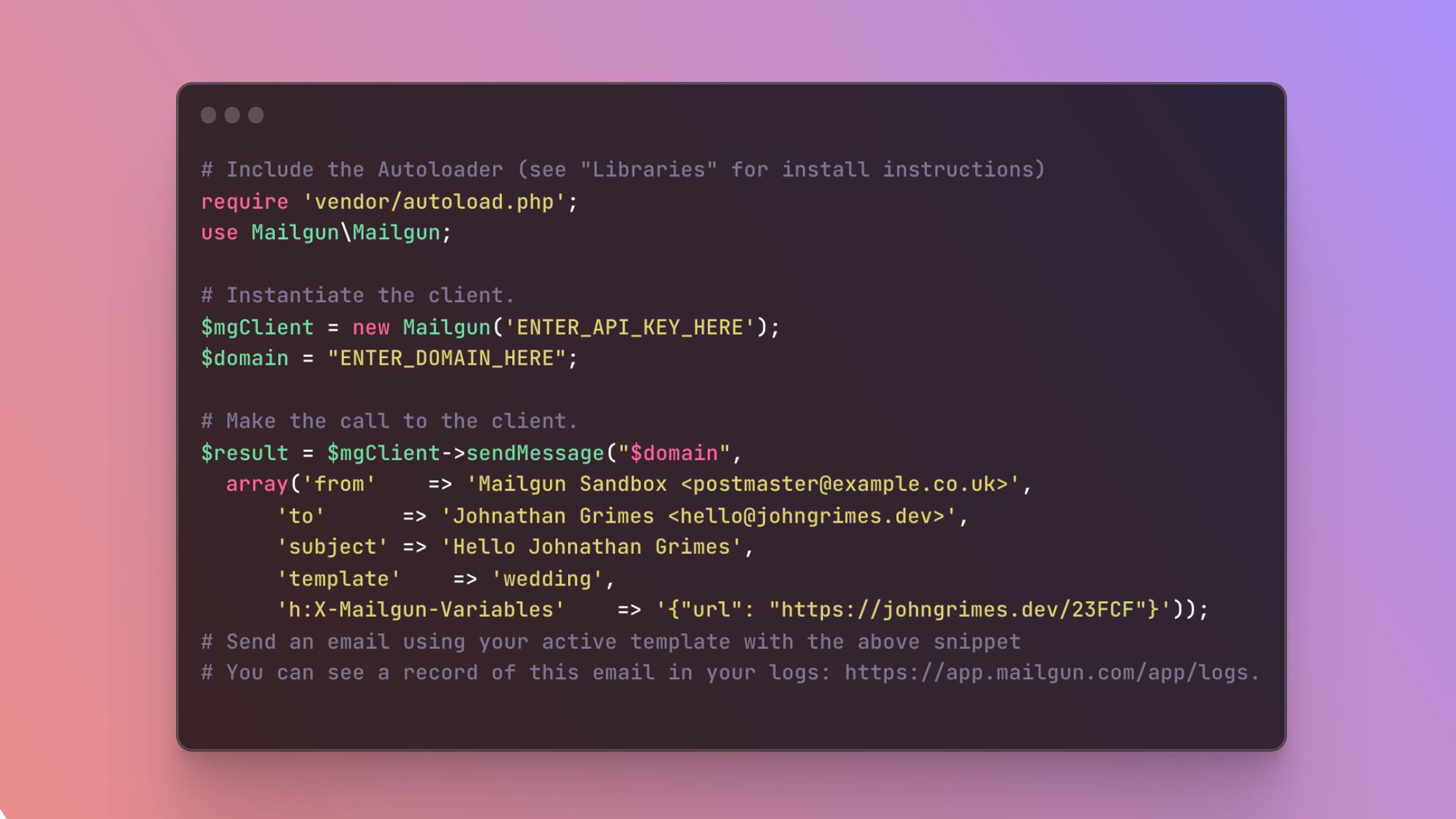How I Pulled Off a Last-Minute Custom Design Email Campaign with Mailgun's API using PHP and cURL

In today’s fast-paced world, businesses often find themselves facing last-minute requests and tight deadlines. Recently, I encountered one such challenge when I needed to send a custom design email to a list of subscribers with unique URLs. Thankfully, I was able to rise to the occasion and successfully accomplish the task using Mailgun’s API in conjunction with PHP and cURL. In this blog post, I’ll share my experience and the steps I took to execute this timely and impactful email marketing campaign.
1. The Power of Mailgun:
Mailgun is an email service provider that offers a robust API, making it an ideal choice for integrating with PHP applications. Its comprehensive features, including email delivery, tracking, and analytics, provided me with the necessary tools to deliver a successful campaign.
2. Planning the Custom Design Email:
Before diving into the technical implementation, I first planned the design and content of my custom email. I wanted to create a visually appealing template that would resonate with my subscribers. My goal was to make it engaging, personalized, and encourage click-throughs by providing unique URLs for each recipient.
3. Setting up the Mailgun Account:
To utilize Mailgun’s API, I created an account on the Mailgun website. This process involved verifying my domain, obtaining an API key, and configuring my sending domain.
4. Integrating Mailgun API with PHP:
Using PHP, a widely-used programming language, I integrated Mailgun’s API into my application. This integration allowed me to automate the process of sending personalized emails to my subscribers.
5. Leveraging cURL for API Requests:
cURL, a library for making HTTP requests, proved to be an invaluable tool in my implementation. I utilized cURL to send POST requests to Mailgun’s API endpoint, passing the required parameters such as the recipient’s email address, sender details, subject, and HTML content.
6. Generating Unique URLs:
To provide each subscriber with a unique URL, I incorporated PHP’s string manipulation functions to dynamically generate a URL based on recipient-specific parameters. This ensured that each subscriber received a personalized link tailored to their profile or preferences.
7. Testing and Optimization:
Before deploying the campaign, I conducted thorough testing to ensure that the emails rendered correctly across different email clients and devices. I also paid attention to optimizing the email’s performance by optimizing image sizes, using inline CSS, and minimizing code to improve deliverability and load times.
8. Analyzing Results:
Once the campaign was launched, I closely monitored the analytics provided by Mailgun. This data allowed me to track open rates, click-through rates, and other valuable insights. Armed with this information, I could refine my future campaigns and make data-driven decisions to improve engagement and conversion rates.
Conclusion:
By harnessing the power of Mailgun’s API and leveraging the versatility of PHP and cURL, I successfully executed a last-minute custom design email campaign. Despite the time constraints, I was able to deliver personalized emails with unique URLs to my subscribers, resulting in increased engagement and meaningful interactions. This experience highlights the importance of utilizing powerful API integrations and demonstrates the endless possibilities that arise from blending technology with creative marketing strategies.
